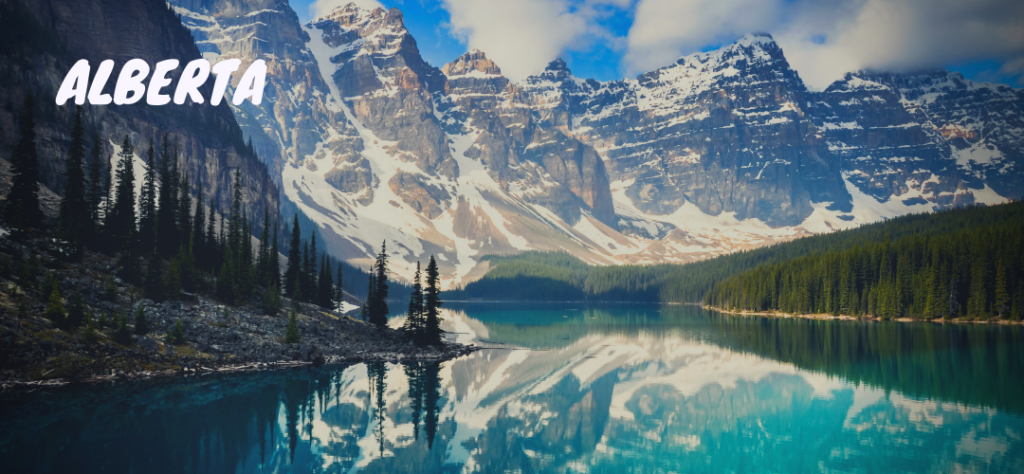
Alberta is located in the western sector of the country. To the north, Alberta borders with the Northwest Territories, to the south it borders with Montana, to the east with Saskatchewan, and British Columbia lies in the west.
 Interesting facts about Alberta
Interesting facts about Alberta
· The province has five national parks and 76 provincial parks.
· Alberta took its name from the Princess Louise Caroline Alberta, the fourth daughter of Queen Victoria.
· The phrase “Trick or Treat” was created in Alberta.
· More than 80% of the residents do some kind of volunteer work.
 Main Cities
Main Cities
Edmonton
Edmonton is the capital and second-largest city of Alberta, with over a million residents. Located in the center of the province, alongside the North Saskatchewan River, Edmonton is the core of the Metropolitan Region. Known as the “Gateway to the North,” Edmonton serves as a hub of operations for the oil, petrochemical, and gas industries, as well as subindustries like finance, transportation, manufacturing, tourism, and technology, among others. Also, Edmonton serves as the center of operations for all the provincial government and public administration activities. The city is a culturally diverse melting pot of nationalities, ethnicities, from immigrants from Northern and Eastern Europe, Asians, Vietnamese and other groups. This multiculturalism has created a metropolis where several religions, foods, cultures, and traditions cohabit and thrive. Speaking of culture, Edmonton is known for the variety of its artistic offers, from natural history museums to arts, music, and nightlife centers. Often referred to as “Canada’s Festival City,” Edmonton is home to a myriad of music, sports, theater and culinary festivals, which are held throughout the year.
Calgary
Located in the south, just 300 kilometers from Edmonton, rests Calgary, Alberta’s largest city, with a population of 1,285,711. The city is the administrative headquarter of the oil industry, as well as many other service businesses such as transportation, insurance, banking, and finance. Calgary is also home to the film and television industries. For the past two years, Calgary has been named the most livable city in North America. According to the Economist Intelligence Unit’s Global Livability Index, the city got an overall score of 97.5 out of 100, achieving perfect numbers in the following categories: stability, healthcare, education, and infrastructure. Calgary flaunts a strong transportation system, including buses, light urban rail systems, as well as bike and walking pathways. Its proximity to the Rocky Mountains makes Calgary the perfect destination to practice winter sports. The city has also a vibrant cultural and artistic agenda, including film, theater, and music festivals. But no event in Calgary matches the clout, fame, and prestige of the Calgary Stampede, a worldwide renowned 10-day festival held every July, which includes rodeo events, music concerts, parades, and many other activities. An unforgettable experience that puts Calgary in the top of mind of many tourists and local citizens alike.
 Education in Alberta
Education in Alberta
Like other provinces in Canada, education in Alberta is public and its funding is the responsibility of the provincial government and the local public school boards. The funds to finance post-secondary education come partially from provincial funds and tuition fees and other sources. The province’s three main universities, the University of Alberta, the University of Calgary, and the University of Lethbridge, are public institutions offering top-rated undergraduate and graduate programs.